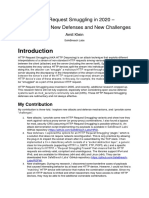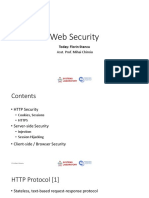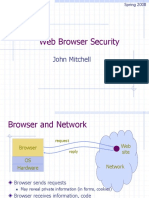0% found this document useful (0 votes)
30 views1 pageRequest Desync 1
The document discusses how to craft browser-compatible HTTP requests that can trigger desynchronization vulnerabilities and enable request smuggling attacks even on single-server sites and intranet sites that are otherwise immune. It covers techniques like client-side desync using paused requests and CL.0 request smuggling that ignores Content-Length headers.
Uploaded by
Sarath KumarCopyright
© © All Rights Reserved
We take content rights seriously. If you suspect this is your content, claim it here.
Available Formats
Download as TXT, PDF, TXT or read online on Scribd
0% found this document useful (0 votes)
30 views1 pageRequest Desync 1
The document discusses how to craft browser-compatible HTTP requests that can trigger desynchronization vulnerabilities and enable request smuggling attacks even on single-server sites and intranet sites that are otherwise immune. It covers techniques like client-side desync using paused requests and CL.0 request smuggling that ignores Content-Length headers.
Uploaded by
Sarath KumarCopyright
© © All Rights Reserved
We take content rights seriously. If you suspect this is your content, claim it here.
Available Formats
Download as TXT, PDF, TXT or read online on Scribd
/ 1




























































